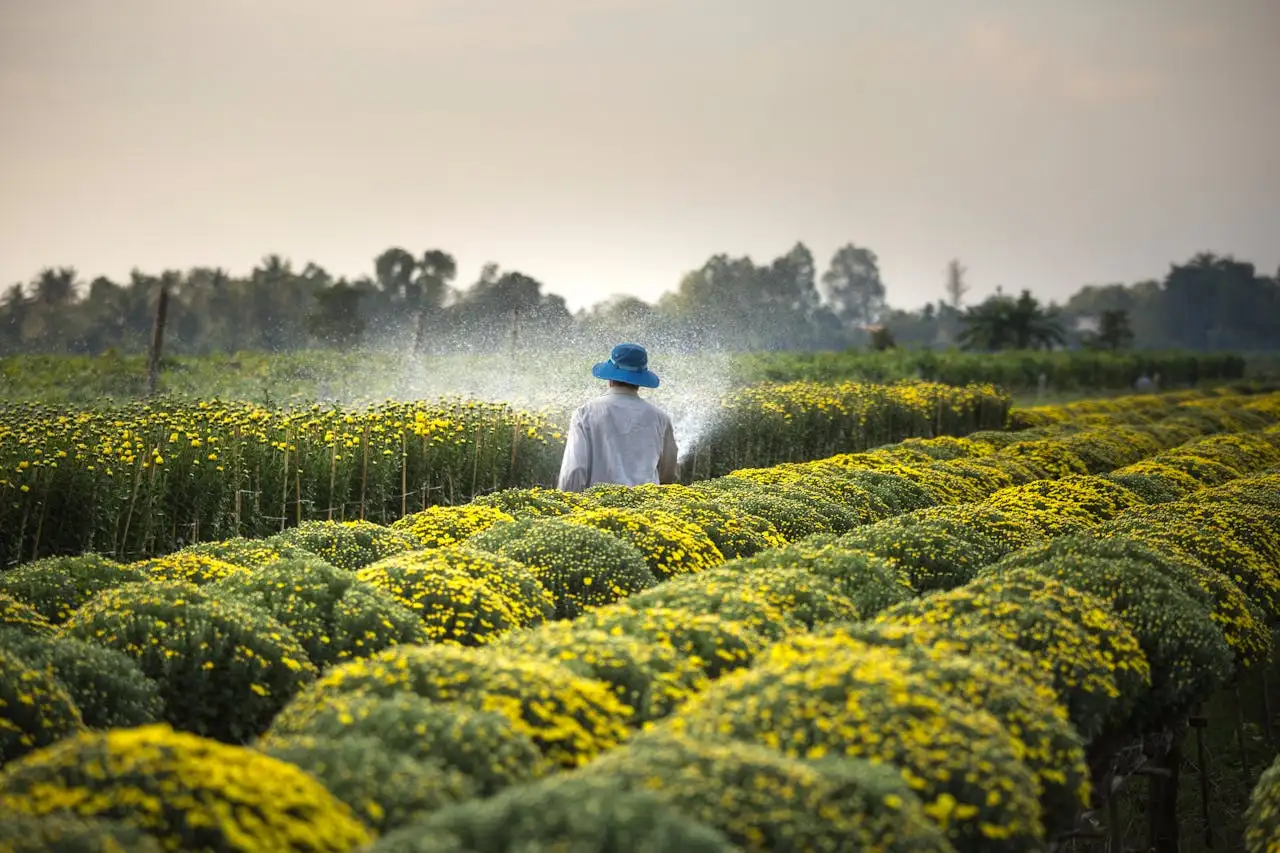 Agro Yield
Agro Yield
09 Jun 2024


10 Jun 2024
Introduction: Building Wealth That Lasts
Many people want to build wealth that stays strong for years—not just something that rises fast and crashes later. If you're one of them, farmland in the United States is worth your attention.
While some people chase risky investments like cryptocurrency, penny stocks, or quick real estate flips, smart investors are turning to farmland—something that has produced reliable income for generations. You may not hear about it on the news every day, but farmland has quietly made people wealthy while also feeding the world.
This article explains why U.S. farmland is one of the best long-term investments, how it works, and how you can get started with Agro Yield Partners, even if you have no experience in agriculture.
A long-term investment is one that grows slowly and steadily over time—usually over 3 years or more. The goal is not to make fast money but to protect your capital and build serious wealth.
Good long-term investments should:
Keep their value during market crashes
Grow over time, even if slowly
Pay regular income (like rent or dividends)
Be easy to pass on to your children or use in retirement
Farmland checks all these boxes—and more.
In many parts of the U.S., wealthy families made their money not from tech or oil, but from owning land. In states like Iowa, Nebraska, and Kansas, farmland has been passed from parents to children for decades.
Over time, these lands have:
Produced crops that earn steady income
Increased in value
Provided tax benefits
Served as a safety net during tough times
Unlike businesses that fail or stocks that crash, farmland keeps working year after year.
Even billionaires like Bill Gates, Warren Buffett, and Jeff Bezos have invested in U.S. farmland—because they know land will always have value as long as people need food.
Let’s look at some real numbers from the USDA (United States Department of Agriculture):
In 2000, the average price of U.S. farmland was about $1,100 per acre
By 2023, that number had jumped to more than $4,000 per acre
That’s an increase of over 260% in just two decades
Why? Because:
There’s a limited amount of good farmland
The U.S. population keeps growing (more mouths to feed)
Food demand rises every year
Cities keep expanding, reducing farmland
Global food exports are increasing
That’s why farmland appreciates in value—slowly, but surely.
Unlike gold (which just sits in a vault) or art (which you hang on a wall), farmland produces income while you own it.
Here’s how you earn from farmland:
Crop Sales: The farm grows corn, soybeans, vegetables, fruit, etc., and sells it.
Rent: If a farmer is working your land, they pay you regular rent.
Profit Share: You may earn a percentage of profits if you're part of a managed project.
Land Appreciation: After several years, the land may be sold at a higher price.
So you don’t just wait for the value to go up. You get steady payments along the way—monthly, quarterly, or annually.
Let’s say you invested $20,000 in a corn farm project listed by Agro Yield Partners.
Here’s what the project offers:
Location: Indiana
Return: 8% per year paid monthly = about $1,600 per year
Term: 3 years
Exit Strategy: Sell or refinance the farm for 20% gain = $4,000
Total Gain: $1,600 × 3 = $4,800 + $4,000 = $8,800 total return
Your $20,000 turns into $28,800 over 3 years—not bad for a secure asset.
When the stock market crashes, many people panic. But farmland doesn’t move with the market. It’s not tied to tech, banks, or politics. Food demand stays strong no matter what’s happening in the economy.
Let’s look at past crises:
During the 2008 financial crash, farmland prices held steady or even rose in some areas.
During the COVID-19 pandemic, food prices went up and farmland returns increased.
During high inflation periods, farmland performed better than stocks and bonds.
This makes farmland a good “anchor investment”—a steady foundation in your portfolio.
There’s farmland in other countries too, but the United States has some of the best conditions:
Strong legal system to protect landowners
Government support for farming
Insurance programs for crop losses
Large domestic and export markets
Reliable transport and storage systems
Access to technology and skilled labor
This means U.S. farmland is not just productive—it’s also safe and easy to manage, especially when you invest through platforms like Agro Yield Partners.
Most people can’t afford to buy a whole farm. That’s where Agro Yield Partners comes in.
Here’s what we do:
Find Profitable Farm Projects: We research the land, the crop, and the local farm team.
Manage the Investment: We handle planting, harvesting, sales, insurance, and updates.
Offer Affordable Entry Points: You can start investing with as little as $5,000.
Provide Full Transparency: You’ll see reports, photos, and updates through your dashboard.
Distribute Returns Promptly: You get paid on time—monthly, quarterly, or at maturity.
In short, we do the hard work, so you can enjoy the rewards.
Farmland comes with some great tax perks:
Depreciation: You can reduce your taxable income by depreciating the value of farm equipment or improvements.
1031 Exchange: If you sell one farm, you can roll that money into another without paying capital gains tax immediately.
Inheritance Benefits: Farmland passed to your children often gets special tax treatment.
Note: Always talk to your accountant, but know that farmland is one of the more tax-friendly assets out there.
Farmland may be right for you if:
You want steady growth over many years
You’re tired of stock market stress
You believe in food, land, and sustainability
You want income plus capital gains
You’re saving for retirement or future family wealth
Farmland is not for people who want to flip their money in 2 weeks. It’s for people who want true financial stability.
Agro Yield offers many plans, but here are a few fictional examples:
Plan Name Amount Needed Term Return Style Profit Type Green Corn Plan $10,000 12 months Monthly 7% income + 10% land gain Almond Gold Plan $25,000 24 months Quarterly 8.5% income + land growth Blueberry Breeze $15,000 18 months End-of-term 30% fixed profit at endEvery plan is different—some are fixed, some are flexible. But they’re all built to perform over time.
Q: Is farmland risky?
A: All investments carry risk. But farmland is one of the lowest-risk real assets you can own.
Q: Can I invest from outside the U.S.?
A: Yes, as long as you follow KYC (Know Your Customer) rules and local laws.
Q: Is my money locked in?
A: Yes, each project has a lock-in period. This helps the farm team plan and perform better.
Q: Can I visit the farm?
A: Visits are allowed for high-tier investors under specific conditions. Most investors get full updates online.
Step 1: Visit [www.agroyieldpartners.com]
Step 2: Create your free investor account
Step 3: Browse available projects or plans
Step 4: Choose the one that fits your goals
Step 5: Fund your investment through bank transfer
Step 6: Receive updates and profits directly in your account
It’s easy, secure, and transparent.
Farmers know how to be patient. They plant, water, wait, and then harvest. Investing in farmland is a lot like that.
You put your money in something real. You wait. You get steady returns. And in time, you see that your wealth has grown—strong and solid, like a tree that stands through storms.
If you want to build long-lasting wealth, farmland is one of the most time-tested ways to do it. And with Agro Yield Partners, you don’t need to own a shovel or wear boots. We make it easy for you to grow your money from the ground up.
 Your Money
Your Money